
Post-Purchase Experience: 6 Ways to Earn Post-COVID Loyalty
Post-Purchase Experience: 6 Ways to Earn Post-COVID We discuss six ways you can use post-purchase techniques to delight new customers into becoming true brand enthusiasts.
Boost customer experience and reduce support tickets
Realtime order and shipment tracking
Proactive order and shipping notifications
Predictive pre-purchase estimated delivery dates
Self-Serivce branded order tracking
Effortless experience delivered
Make returns profitable and delight customers
Flexibility to define any return destinations & conditions
Simplify returns for your customers and team
Incentivize exchanges over returns
Returns management made easy for your team
Understand why your customers are returning
Unify the online and the in-store experience
Hassle-free pickup experience for customers
In-Store Dashboard to keep operations streamlined
In-Store and Online orders unified
Drive foot-traffic to your stores
Boost customer experience and reduce support tickets
Realtime order and shipment tracking
Proactive order and shipping notifications
Predictive pre-purchase estimated delivery dates
Self-Serivce branded order tracking
Effortless experience delivered
Make returns profitable and delight customers
Flexibility to define any return destinations & conditions
Simplify returns for your customers and team
Incentivize exchanges over returns
Returns management made easy for your team
Understand why your customers are returning
Unify the online and the in-store experience
Hassle-free pickup experience for customers
In-Store Dashboard to keep operations streamlined
In-Store and Online orders unified
Drive foot-traffic to your stores
Find the answer to all your questions
Explore the most comon questions about WeSupply
Calculate the ROI that WeSupply can bring you
Request a no strings attached review of your current shopping experience and missed conversion opportunities
Take a step by step trip through our functionality to see how we can improve your ecommerce processes.
Read actionable articles on how to optimize your post-purchase experience and decrease support tickets
Get inspired by stories of how our customers implemented an effortless post-purchase experience
A Deep Dive into Top Companies' Order Tracking & Returns Strategy
Wondering if WeSupply is a good fit for you? Read through our use cases to see how we can help you increase conversion & improve CX!
“As ecommerce captures a growing share of all retail sales, omni-channel brands that have high return rates and high return handling costs find themselves in the unenviable position of seeing their marginal economics deteriorate, what I refer to as the ‘omnichannel migration dilemma’ as their online business grows,” Steve Dennis of Forbes explained.
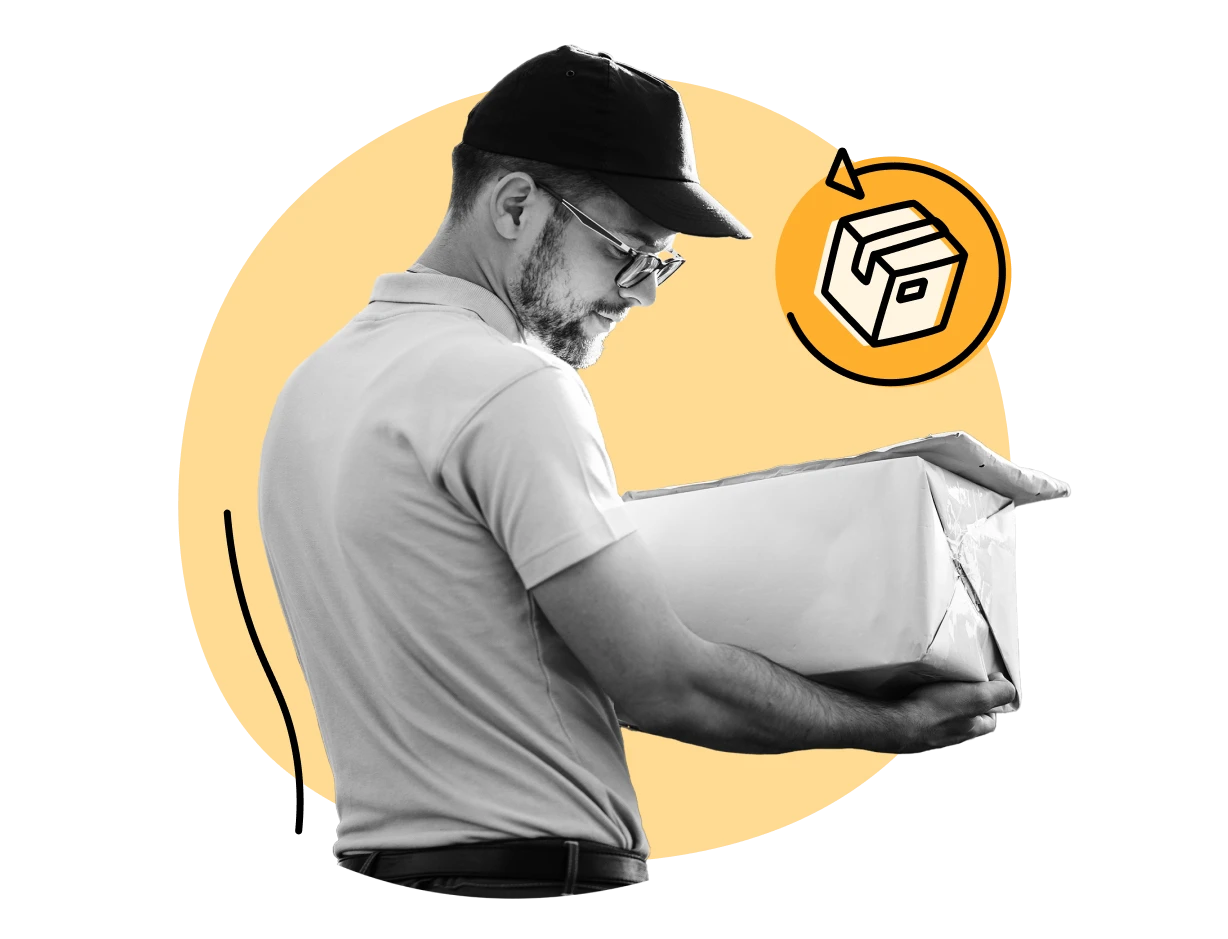
Hello and welcome to the WeSupply. This is Virgil.
So majority of the companies are actually losing a lot of money, and they have a really hard time processing returns, mostly because all the returns are going back to one centralized location.
So let me just give you this example:
Let’s say you’re, you have a web store, and you’re selling, you know, in US, and you have multiple warehouses, one on the East Coast, one on the West Coast. And let’s say your customer is on the East Coast in New York City. And they are trying to return a product. Now, where do you return that product on the East Coast warehouse or on the West Coast warehouse? Well, most of the returns are going to have one centralized location to return on product. And this is mostly happening because they do not have a system in place to actually route each product to the right location.
So if we think about it, we have a lot of challenges these days, actually. So as I said, you know, if you have multiple warehouses, for returns, takes a lot of time and money to process these returns. And if you work with drop shippers, or different vendors, for example, let’s say you’re selling lifestyle products, from clothing all the way to furniture, the clothing might come from one company, right? From one vendor from Nike or whoever it might be, you know, whatever, it’s going to ship the product for you as a drop shipper, but the furniture might come from a completely different company.
And the same thing can happen if your company’s returned locations are not equipped to process these products. So for example, you’re selling bathtubs, right, and you have a big bathtub hundreds of pounds, very heavy product. But you’re also selling accessories like the faucet, you know, or different fittings, whatever it might be. If you return that entire bathtub to the warehouse that is not equipped to receive that heavy product that is not equipped to lift that heavy product, how are they even going to process that return?
It’s very, very challenging. And many, many retailers are actually facing this problem every day. As I said, you know, one of the biggest challenges, you know, like in efficiencies, you know, like, you have multiple warehouses throughout the country, but you’re always sending back all the products to the main location, it can be a nightmare, honestly, it can be a nightmare.
The customers these days are demanding transparency. So a few weeks ago, I watched, there was a 60 minute like, video on YouTube, in which a company actually researched How is Amazon you know, handling returns, you know, where they are sending back each product, and if they are disposing those products or repairing those products, to make sure that they are reducing the carbon footprint. You know, they process returns in a sustainable fashion. products that can be recycled are actually recycled and not dumped into the landfill.
And for example, if you’re sending specific products such as mattress, nobody’s going to sleep in your return mattress, right? Usually those products are sent in to donation centers where they’re cleaned, you know, and basically donated to a person in need. So, if you think about this entire situation, returns are not just challenging processing them, but the entire logistics behind and if you have, you know, highly discounted products final sale, kind of things, you want to return those products to maybe an outlet or a liquidation store instead of back to your warehouse and from that warehouse to, one of your locations. So, a lot of challenges, but in the same time, you have a lot of opportunities.
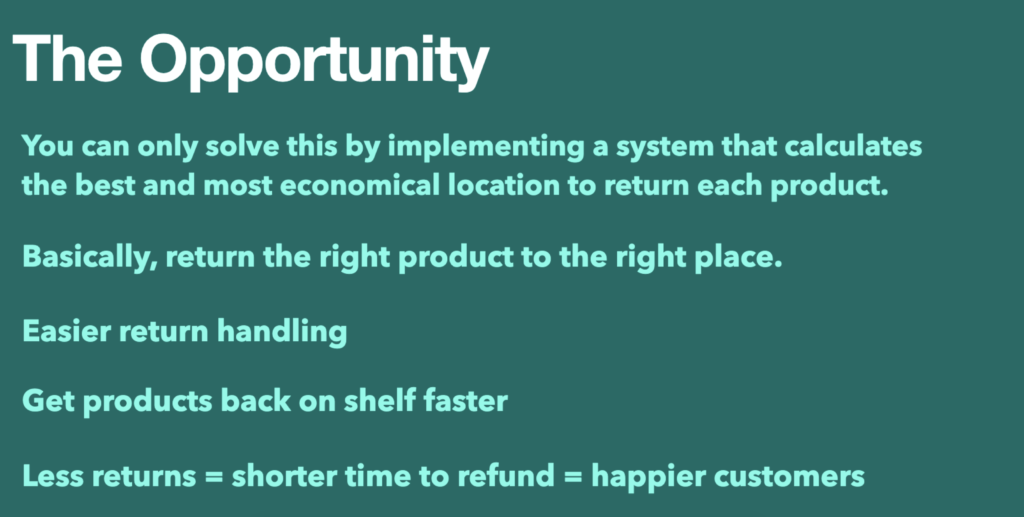
The Opportunity
You can only solve this by implementing a system that calculates the best and most economical location to return each product.
Basically, return the right product to the right place.
Easier return handling
Get products back on shelf faster
Less returns = shorter time to refund = happier customers
When we look at opportunities, we can optimize, the logistics in returning the product, but what we need is a solution that can actually calculate where each product should be returned.
So, as we discussed, heavy products, bulky product to the right warehouse that can actually process that, like, regular clothing, for example, returned to the closest warehouse, so you’re actually saving some money there as well. Or, if the product needs to be recycled directly to a recycling facility or Donation Center, some customers are following this.
The faster you can get back the product, the faster you can put it back on your shelf, actually, faster, you can return that product, you know, the faster the customer is going to get the refund, and it will ultimately result in happier customers.
If you have the right system in place, you actually have the opportunity to create a win win situation faster for the customer, but faster for yourself as well. Everybody gets their money faster, win win situation, right.
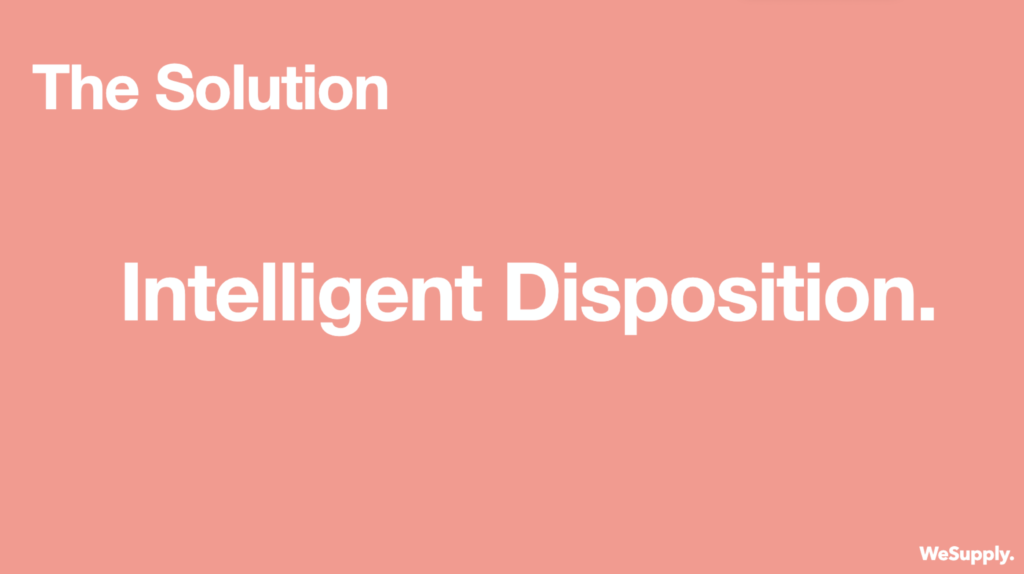
The Solution
Intelligent Disposition
So what we’re talking about this here is actually what we call intelligent disposition, we basically launched this new feature, we’re very happy for it.
I would like to give you a few examples of how this can be used.
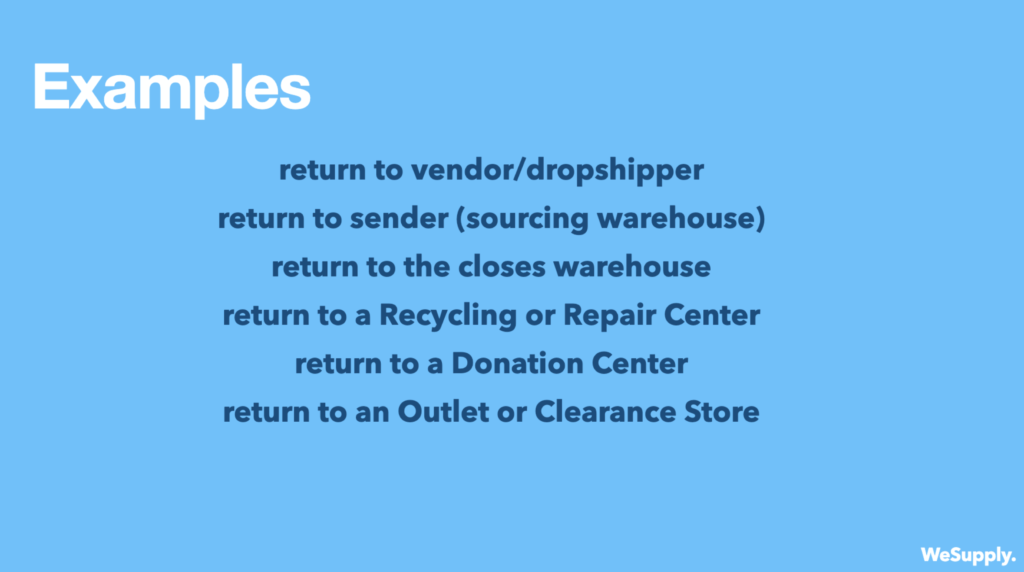
Examples
So as we said, if you’re working with various vendors or drop shippers, you already know, returns are a nightmare. If you want to return each product to the original warehouse that was sourcing the products or maybe the Furniture Warehouse A, clothing Warehouse B, you don’t want to meet mismatched warehouses.
Also, opportunities to return save money on the labels, right by returning each product to the closest warehouse.
So, now, let me show you how this actually works.
Here we have an order with three products, but these products are actually sourced from completely different location right.
So as soon as we return these products, we are going to see that if we selected return to vendor, we have a logic in the back end, which allows us to you know, so our intelligent disposition actually allows us to create logics and rules you know around products and products, attributes or various conditions to determine what is going to happen with the product. so in this situation, we said all the products should go back to the original warehouse, right?
First few products were actually purchase from warehouse one, prop number three, warehouse number two.
Now when we are going to process this return, what we are expecting is to create to our return labels and the two products to be grouped together, going back to warehouse one, and third product to warehouse 2.
Click Continue.
Now we can see the instructions, we are going to receive you know a prepaid downloadable return label. So we have the product, we see the cost the total. And now when we’re finalizing the return, what we’re actually doing now we’re actually calculating all the logics that you’ve set up and we are generating return labels based on the logic.
So we are going to determine which product goes into each warehouse and generate a return label for each.
So if we scroll further down, we can see the first two products are part of the first RMA. And here we have the the first the first return label, and if we scroll a little bit further down, we have the second RMA and the return label for this one.
It’s very easy for the customer.
To see which product goes with which return and in which box, it’s great for you is great for the customer.
And as long as we are communicating that with the customer and they are going to be more than happy to return to the right location.
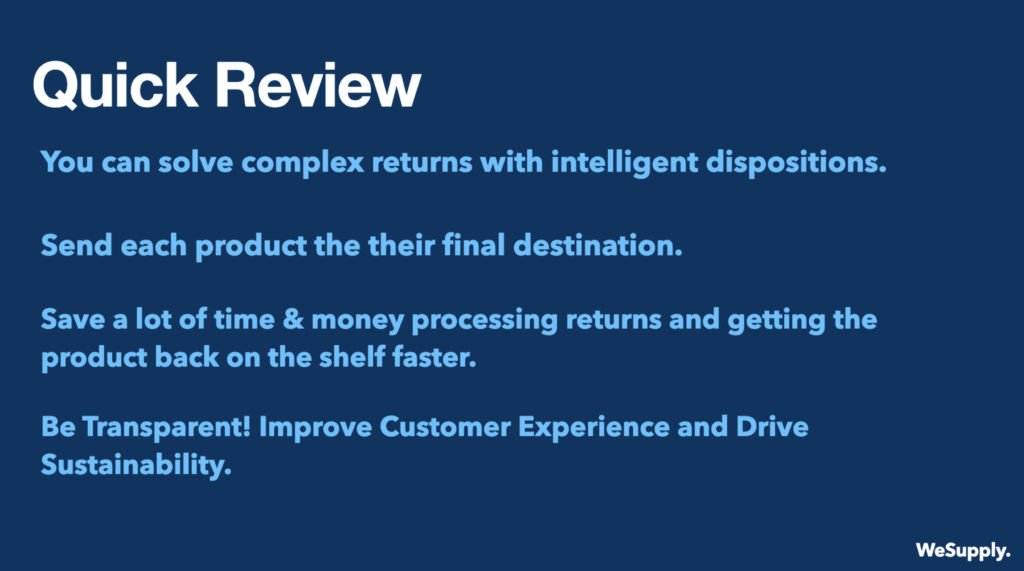
You can solve complex returns with intelligent dispositions.
Send each product to their final destination.
Save a lot of time & money processing returns and getting the product back on the shelf faster.
Be transparent! Improve customer experience and drive sustainability.
Returns can be very complex, but it can be solved with a solution that allows you to do intelligent dispositions, that is based on rules and logics, and automatically calculated.
You want to send back the product to the right destination, and not just to the right destination, but to the final destination.
By doing so, you can save a lot of time and a lot of money, and ultimately, you’re going to get your products back on the shelf faster, the customer is going to receive their refund faster, and they’re going to be much much happier with your services.
And as we said, customers demand transparency. They want to see what you as the company is going to do with their products that they just returned.
I highly recommend actually to watch that short video, I’m going to put this in the comment section that actually shows you know how this group of people that are actually chasing down with trackers, you know, Amazon products to understand how the products are returned and you’re going to see like the reaction when they find out that products that they thought are going to be resold are actually sent to landfill. It’s insane! what happens.
So next. Don’t forget this is already live.
So if you have any questions, just reach out to us, and we can help you set everything up. It’s very easy. One of our customer success manager is going to help you configure everything and get started.
If you have any questions reach out to us.
Take care! Bye!
Returns are inevitable, but they don’t have to be a nightmare. It’s our mission to recover lost profits through technology-driven infrastructure that efficiently manages returns.
Get a Free Demo To See How WeSupply Can Work For You
Learn How To Create Successful Post Purchase Email Campaigns
Build an effective post-purchase email flow that helps you increase customer satisfaction and drive revenue growth!

Post-Purchase Experience: 6 Ways to Earn Post-COVID We discuss six ways you can use post-purchase techniques to delight new customers into becoming true brand enthusiasts.

Check out this article for 20 surefire ways to engage with your customers using personalized post-purchase emails.
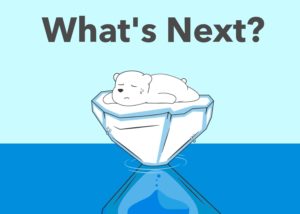
Running to Adobe Summit with Brent Peterson from Wagento Did you know Wagento built the Selena Gomez website? Checkout what Brent has to say about

How to use pre & post purchase transparency to drive more conversion & build customer retention this holiday season!

Introduction to Post-Purchase Experience Date: Friday, October 25th, 2019 Time: 8:00am PST / 11:00am EST Get a Free Demo What: This is the first general interest

Don’t let porch pirates steal your thunder during the holiday season!
Here are four ways you can help fight package theft for your customers!
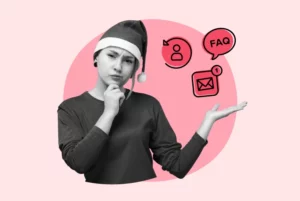
Four easy-to-implement optimizations that will reduce the workload for your customer service department this holiday season!

In eCommerce, holidays are a hit or miss. We take a look at the five biggest issues threatening to derail your busy season & how we can help!

We put together this holiday eCommerce website checklist to help you prepare for the upcoming season. This checklist gathers all the seasonal best practices that are also the recipe for year-round optimization and success!